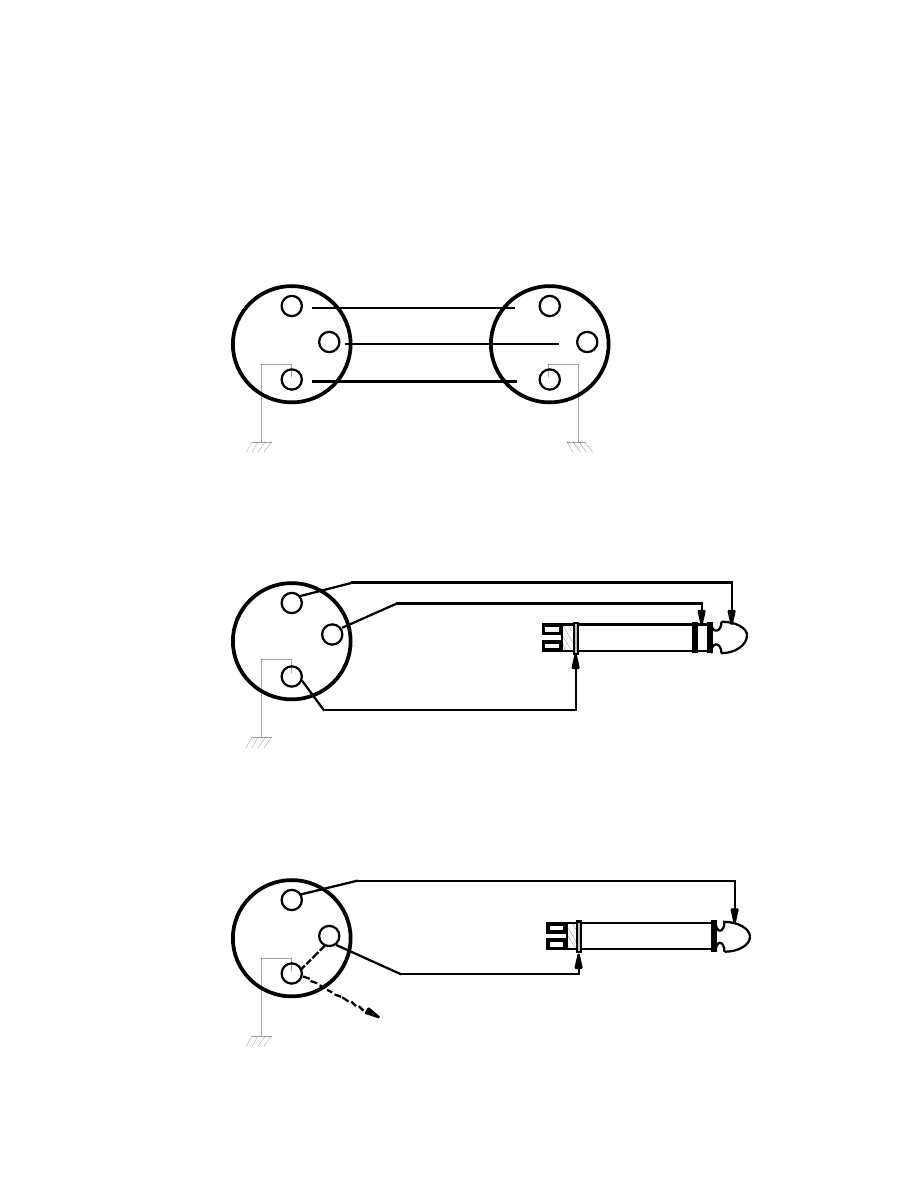ВУЗ: Казахская Национальная Академия Искусств им. Т. Жургенова
Категория: Учебное пособие
Дисциплина: Не указана
Добавлен: 03.02.2019
Просмотров: 12504
Скачиваний: 6

A
A-weighting: An equalization curve first applied to sound level meters in an attempt to make
their measurements correspond better to the perceived loudness of sounds, decreasing the
sensitivity of the meter to frequencies below 1kHz. An important note is that the bottom oc-
tave (32Hz) is attenuated by almost 40dB; the second octave (63Hz) by 26dB, and the third
octave (125Hz) by 16dB. See B-weighting, C-weighting, equal loudness curves, SPL.
axis: In microphones, the direction of maximum sensitivity, generally perpendicular to the
surface of the diaphragm or ribbon. In loudspeakers, the line projecting through the center of
the voice coil toward the listening area. This is usually the direction in which the speaker ex-
hibits the best overall frequency response. See acceptance angle, off-axis, directional microphone,
polar pattern.
azimuth: In a tape recorder, the azimuth is the angle that the gap in the record or playback
head makes with the direction of the tape travel, and it must be precisely 90˚ to ensure proper
high-frequency performance.

B
B: The right-hand part of a stereo signal.
baby boom: The nickname of the Dolby 70mm process that dedicates two of the six tracks
on a 70mm print to low-frequency information (signals below 250 Hz) This term is no
longer used as the new digital multichannel film sound formats specify a dedicated
subwoofer track.
backbeat: A music term referering to the second and fourth beats in a four-beat bar, often
emphasized by the drummer.
back coating: In magnetic recording tape, a thin coating applied to the non-oxide or back
surface of the tape to reduce slippage between tape layers, prevent accumulation of static
charge, and to minimize curling or wrinkling.
backfill: To edit fill between words so that the whole length of a scene, including sections
where the take or angle in question is not being used, is contiguous.
backgrounds: Sound effects that sonically define the time and place of a location. Also
called ambience,
atmos or atmospheres, backgrounds give a sense of lush sonic effects and
placements, more specifically, usually a tasteful use of pan controls, reverbs, delays, and other
positioning tools. BGs are considered sound effects and are not the same as room tone.
backing track: Pre-recorded music used by a singer or other musician during performance
and which augments or entirely replaces other performers. This has become increasingly
popular as musicians attempt to recreate the sound of their studio recordings live on stage.
backing vocals: In popular music, extra vocal parts which fill gaps in, or harmonize with,
the lead vocal line. Usually sung by specialist session singers. Usually abbreviated bvox.
backline: On-stage instrument amplification.
back plate: In a condenser microphone, the fixed, rigid capacitor element that is charged with
an electric polarity opposite to that of the diaphragm.
backtiming: Subtracting the length, in minutes and seconds, of a recorded segment from the
time in a longer program at which the segment is supposed to end. If a three-minute
segment is to end a 30-minute program, backtiming will indicate that the end segment needs
to roll at 27:00.
backward masking: See temporal masking.
BAC&S: British Academy of Compusers and Songwriters. A group being formed among
the current Association of Professional Composers, the Composers’ Guild of Great Britain
and British Academy of Songwriters, Composers and Authors, building a larger and more
influential “umbrella” organization.

B
baffle: A partition placed between two sources of sound, or between a sound source and a
microphone, to prevent sound from passing through. The baffle, or screen, may be made of
any material with a high absorbtion coefficient. Most baffles are designed as movable
partitions, and are used to isolate individual instruments in recording studios.
bake off: Hollywood colloquialism for the meeting of the Sound Branch of the Academy of
Motion Picture Arts and Sciences in which the members hear ten-minute clips of the seven
films that have made the semifinals of the Best Sound Effects Editing award.
balance: (1) The amount of relative signal provided to each of two (or more) audio channels.
(2) A control on a synthesizer which adjusts the relative volumes of two different sounds
which it can voice simultaneously. Not to be confused with pan.

B
balanced line: Audio lines in which the signal current is not carried by the cable shield of a
shielded cable. This requires two conductors for the signal, enclosed in a shield, with neither
conductor connected to the shield. The circuit utilizes two identical conductors operated so
that the voltages on each of them are equal in magnitude, but opposite in polarity with respect
to ground. Compare with unbalanced line. See common-mode.
+
-
Screen
2
3
1
Balanced XLR
+
-
Screen
2
3
1
Balanced XLR
Chassis
Ground
Chassis
Ground
+
Screen
2
1
Balanced XLR
Chassis
Ground
-
3
Balanced TRS
+
-
Screen
2
3
1
Balanced XLR
Chassis
Unbalanced Jack Source
To cable shield*
*If no connection between pins 1 & 3, with short to cable
shield, there will be a 6dB loss in signal strength

B
balance stripe: See mag film.
ballistics: The dynamic behavior of the needle in a meter, such as a VU meter.
balun: BALanced-to-UNbalanced. A transformer device used to convert a singled-ended
(unbalanced) signal to a differential (balanced) signal. A balun is a essentially transformer
with one leg of the input and output windings hooked together. More complicated devices
may also change impedences at the same time. The most common use for a balun is a 75
Ω
coaxial-300
Ω
twin-lead converter used in television.
band: (1) An extent along the frequency dimension in which a signal exists is the band. For
instance, an octave band is one octave wide. The AF band is 20Hz-20kHz wide. (2) The
wider spiraled grooves that separate any two selections on a record. (3) Band is also used to
indicate any single selection on a record, cassette, or reel-to-reel tape or CD, i.e., a track(3).
band-limited: A signal is said to be band-limited if its frequency content is restricted to a
particular frequency range. For instance, the output signal of a CD player is band-limited to
20kHz by the reconstruction filters built into the player.
band masking: See frequency masking.
band part: A notated form of a piece of music, derived from a full score, usually containing
only the music for a single instrument or pair of similar instruments.
bandpass filter: A filter which has both a high-frequency and low-frequency rolloff, and
only frequencies in between are allowed to pass. When applied to sound synthesis, a band-
pass filter makes the waveform sound like it is coming down a phone line as telephone lines
cannot reproduce lows or highs. The opposite of a band-reject filter.
Amplitude, dB
Frequency
F1
F2
Passband
3dB
Bandpass Filter Frequency Response
band-reject filter: A filter that discriminates against signals in a specific frequency band.
The most common band-reject filters reject a vary narrow frequency band, and they are usu-
ally called notch filters. The opposite of a bandpass filter.